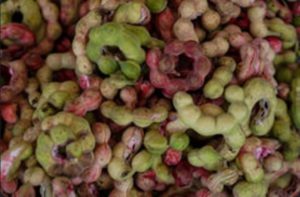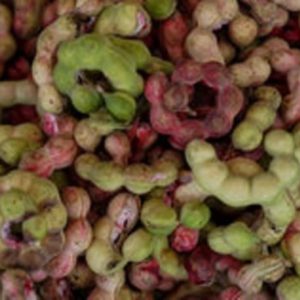Have you ever stumbled upon a twisted, green pod on a tree, cracked it open, and found a sweet, tangy pulp inside? If you live in a tropical climate, you might have met the Manila Tamarind, known in Telugu as Seema Chintakaya (సీమ చింతకాయ).
This isn’t your regular tamarind. It’s a hidden superfruit that’s not only delicious but also packed with incredible health benefits. Let’s dive into the fascinating world of this underappreciated tree!
First Thing: What Exactly Is Manila Tamarind?
Despite its name, the Manila Tamarind (Pithecellobium dulce) is not a true tamarind. It’s actually a member of the legume family, originating from Mexico and Central America. Spanish explorers introduced it to the Philippines, and from there, it spread across the tropics, earning its common name.
The tree is hardy, fast-growing, and provides excellent shade. But the real magic lies in its fruit: coiled pods that reveal a creamy, sweet-and-sour pulp when cracked open. The taste is a unique blend of sweet apple and tangy tamarind—a flavor adventure you won’t forget!

Why Your Garden Needs a Manila Tamarind Tree
Thinking of planting a tree? Here’s why this one is a winner:
-
Low Maintenance: It thrives in poor soil and is highly drought-resistant once established.
-
Fast Grower: It provides shade and beauty relatively quickly.
-
Eco-Friendly: As a legume, it fixes nitrogen in the soil, improving soil health for other plants.
5 Incredible Health Benefits of Seema Chintakaya
This humble fruit is a powerhouse of nutrition. Here’s why it’s good for you:
-
Immunity Booster: Packed with Vitamin C, it helps strengthen your immune system and fight off those pesky colds.
-
Digestive Aid: The high dietary fiber content promotes healthy digestion, prevents constipation, and keeps your gut happy.
-
Rich in Antioxidants: It contains flavonoids and polyphenols that combat free radicals, reduce inflammation, and support overall health.
-
Good for Eyes & Skin: Thanks to Vitamin A, it contributes to good vision and glowing skin.
-
Energy & Iron: It provides a quick source of natural energy and contains iron, which helps prevent anemia.
How to Eat Manila Tamarind: Ideas from Simple to Gourmet
The easiest way is to eat it fresh! Just break the pod and enjoy the pulp straight from the seed (remember to spit the seed out!). But the possibilities are endless:
-
Street-Style Snack: Sprinkle the fresh pulp with a mix of salt and chili powder for a tangy, spicy treat.
-
Refreshing Drinks: Soak the pulp in water to make a delicious sharbat or lemonade-like drink. Perfect for a hot summer day!
-
Jams & Chutneys: Its high pectin content makes it ideal for jams. Its tangy flavor also creates incredible chutneys that pair perfectly with snacks like pakoras and samosas.
-
Curry Base: Use it as a souring agent in dals, sambars, and curries for a unique twist.
Pro Tip: The pinkish pulp is usually sweeter than the white variety!
A Quick Word of Caution
Enjoy this fruit in moderation. The seeds are not edible and should be discarded. Overeating the pulp might cause a stomachachefor some due to its high fiber content.
Final Thoughts
The Manila Tamarind (Seema Chintakaya) is more than just a roadside tree—it’s a source of delicious food, powerful medicine, and resilient beauty. It’s a testament to how nature often hides its best gifts in the most unexpected places.
Have you ever tried Seema Chintakaya? What’s your favorite way to eat it? Share your experiences in the comments below!

Leave a Reply